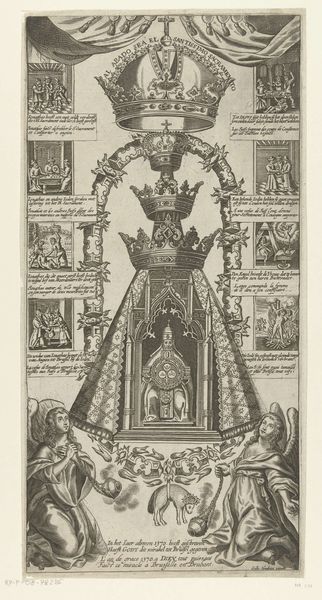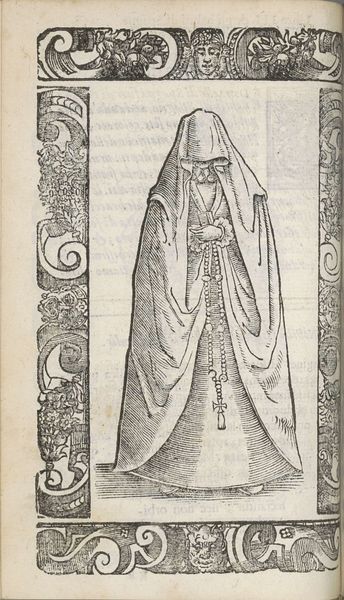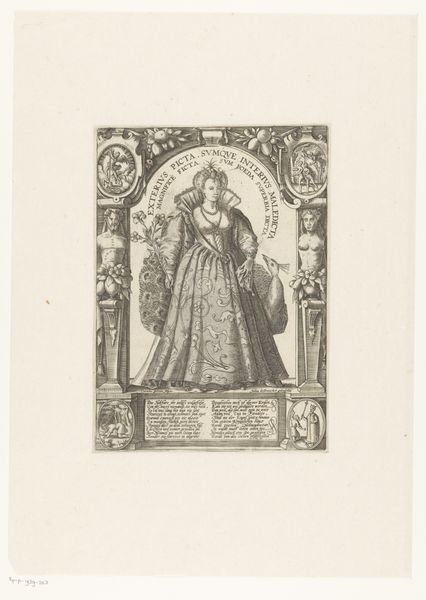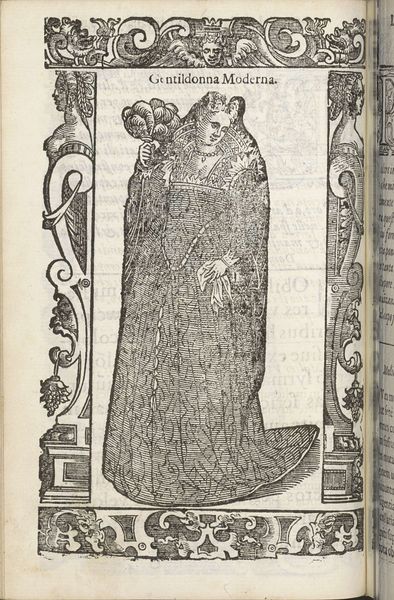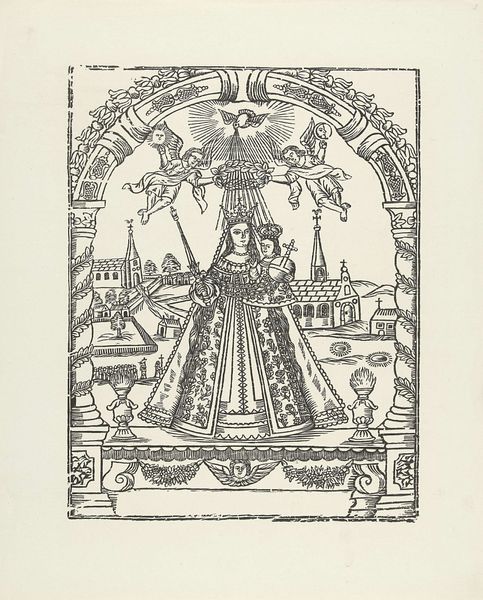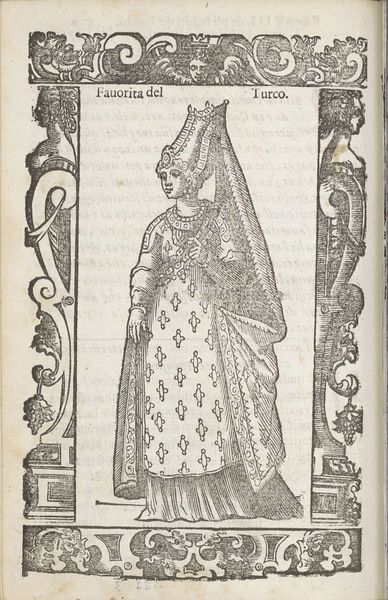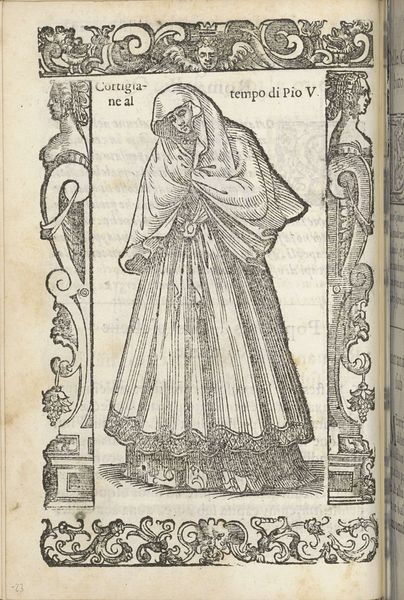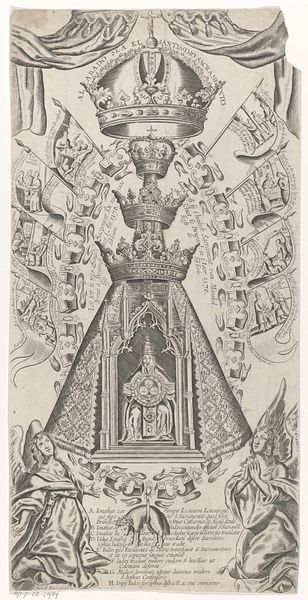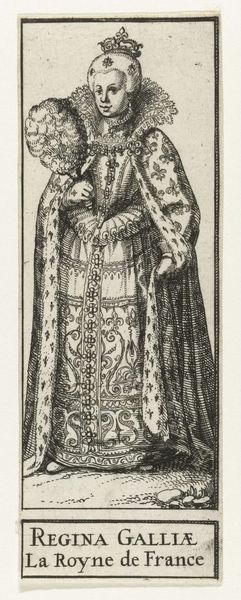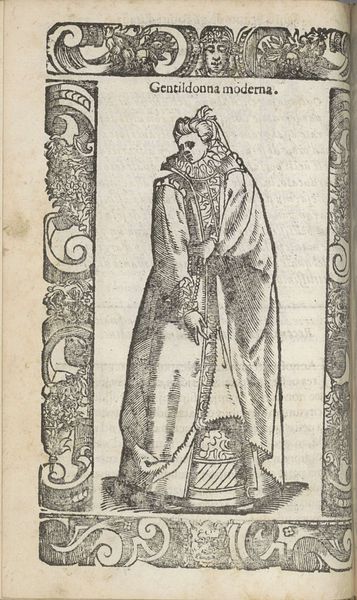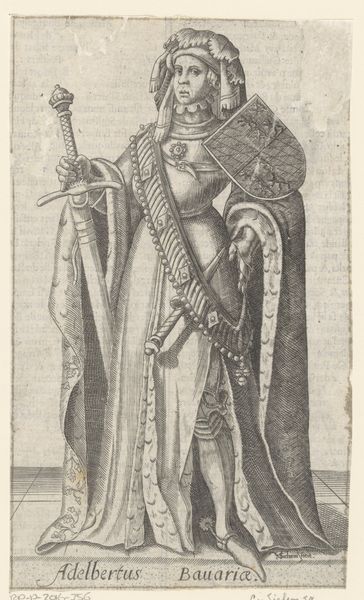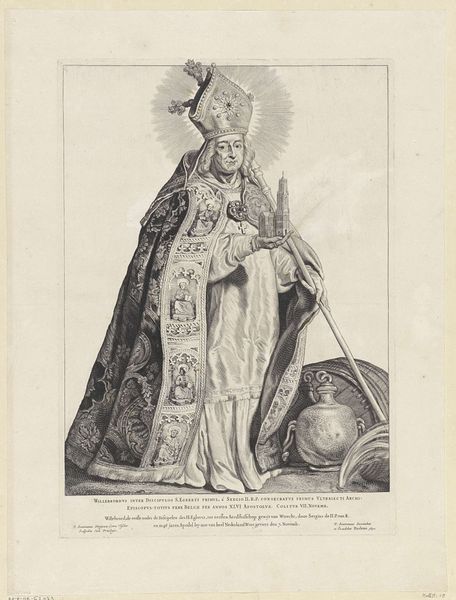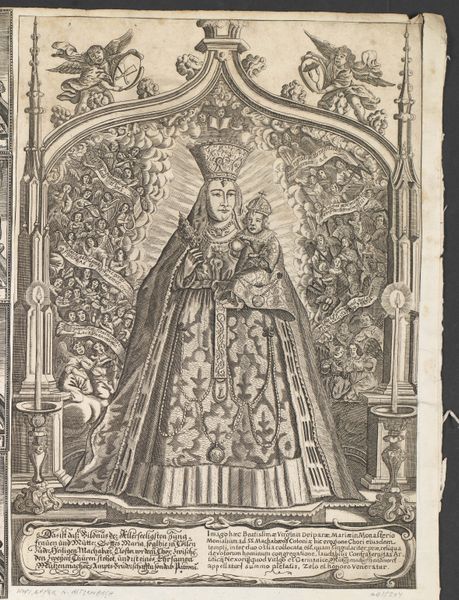
Dimensions: height 447 mm, width 363 mm
Copyright: Rijks Museum: Open Domain
Editor: Here we have "S. Anna tot Botelaer," a print dating from somewhere between 1700 and 1865. It's an engraving, an intaglio piece showcasing figures in the baroque style. It looks so intricate. What jumps out at you? Curator: Immediately, I see the materiality of its production: the metal plate, the pressure of the press, and the labor involved in creating these lines. Considering it was made somewhere around 1700-1865, what social structures facilitated its creation and distribution? Was this mass-produced for popular consumption, or a luxury item for the elite? Editor: I didn't even consider the socioeconomic implications, focusing more on the religious imagery. So, are you saying the value lies not in the art, but what it tells us about labor, and materials? Curator: Precisely. The contrast between the fineness of the engraving and the potential exploitation of the craftspeople who produced it raises interesting questions. How does the depiction of Saint Anna reinforce certain power structures, perhaps even obscuring the labor behind the artwork? Notice the crown: how did the means to get that crown exist? Editor: It makes you rethink the beauty when you think about it like that. Perhaps looking beyond the art itself really expands what we take away from each piece. Curator: Exactly! Thinking critically about materials, means of production and how it shapes our consumption changes everything. Editor: I'll never look at prints the same way again! Thanks for the perspective.
Comments
No comments
Be the first to comment and join the conversation on the ultimate creative platform.
